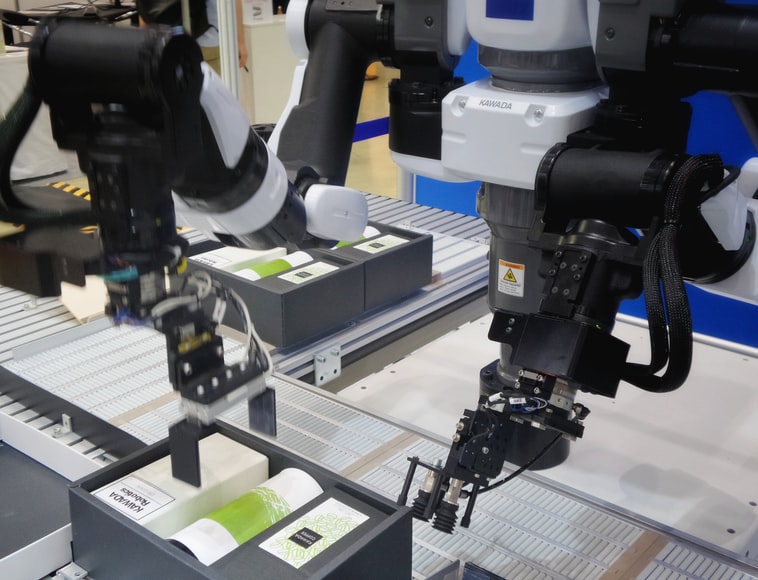Electronics, mechanical engineering, computer science, and other fields are all included in robotics. Design, construction, usage of robot control, sensory feedback, and information processing are all included in this field. The following technologies are expected to displace people and human activities during the next several decades.
Mechanical engineering deals with the development of mechanical devices and systems. Isaac Asimov claimed to have given robotics its name in a short fiction written in the 1940s.
Robotics Details
| Category: Collection, Handicraft, Technology | Time: 1-2 hrs | Skill: Some |
| Initial Cost: $$$ (101-500) | Space: some | People: alone, small |
| Long-Term Cost: Medium | Makes Money: No | Location: indoor |
What is robotics?
An important part of robotics is the development, design, manufacturing, and use of robots. Humans have long sought intelligent robots that can help them in several ways.
There are many types of robotics. As an application, robotic process automation (RPA) mimics how people interact with software to execute repetitive rules-based activities. Still, it may also take the shape of a robot that resembles a person.
While the discipline of robotics and research into the possible applications and functioning of robots has expanded significantly in the twentieth century, the concept is not new.
Who is interested in Robotics?
Robotics allows people of any age, gender, or ethnicity to experience an interactive toy they can play with. Robotics does this by combining engineering and programming with creativity and problem-solving.
Hobby robotics is an ideal pastime for any computer whiz since it requires a combination of creativity, computer proficiency, and a desire to create valuable devices from discarded components. Finding a local robotics club is an excellent way to get started in this activity.
With all of their hard work in front of them, they will be able to see the fruits of their labors, and they can experiment with the code to see what happens next.
Benefits of Robotics
In addition to increasing productivity and safety, industrial robots have also reduced labor costs. Work done by robots is exact, consistent, and of high quality since they do not need rest periods or vacations. As an added benefit, robots in the industrial sector free up human employees from physically demanding and dangerous tasks. As technology advances, the advantages of robots will become more apparent.
Mundane Tasks Are Reduced
There are numerous companies where workers waste countless hours performing routine activities that might be used elsewhere. Employees in a manufacturing facility may be required to go between a storage area and the mechanical production assembly line to get products.
Safety
Using robot technology has several advantages, but the most obvious one is that it is safe. Heavy equipment, heated machinery and tools, and sharp objects may all inflict damage on a person. A repair bill is more likely than an actual medical cost or a claim when hazardous tasks are delegated to robots.
Reduction in Labor
At the same time, although reducing work may not be beneficial to employees, it may help businesses with their primary priority. Robots can accomplish many tasks that low-paid employees undertake; thus, using a robot may save a company significant money and time. So, for example, robots are used in medical facilities to carry medicine and testing from one location to the next without the need for human intervention.
Consistency
When it comes to robots, they do not have to worry about dividing their attention between several tasks. Nothing they do is ever reliant on the labor of others. No unexpected crises will arise, and they will not be transferred to complete a different time-sensitive task.
Precision
The accuracy and exactness of the robots in the workplace are impressive. All day, they labor at the same pace, and unlike humans, their vigor never wanes. They do not grow tired of doing the task since they may do it as many times as they like during the day. Robots will consistently provide high-quality content.
Increased Output
As a means of gathering the product, robots are sometimes used in industrial environments. For example, automakers have traditionally relied on robots to help with assembly line work. The mechanical manufacturing system incorporates a robot that assembles small pieces of hardware before being handed off to a human worker.
Flexibility
Robots can operate in a variety of ways because of their adaptability. They can work in hostile environments, something humans could not do. In this manner, robots are used, sent, and assigned in places where humans cannot. As a result, they are flexible and adaptive in every situation.
Cost of Robotics as a hobby?
New industrial robots range in price from $50,000 to $80,000 when equipped with controllers and teaching pendants. The robot system may cost anywhere between $100,000 and $150,000 when application-specific accessories are included. But there are also robot kits that are designed for kids and teenagers, and these kits can range between $20 to $100, depending on their complexity. To know more about robots that can be given as gifts for children and people who want to try robotics, take a look at our Robot Gift Ideas for the Holidays.
Conclusion
Today, most robots are employed by companies, factories, warehouses, and labs to do their tasks. There are many ways in which robots come in handy. It helps the economy since companies must be efficient if they are to remain competitive in their fields. Because robots can do tasks better and quicker than people, such as assembling a vehicle, having them on-site helps businesses stay competitive. Although they can do specific jobs, robots cannot do them all. Today, robots play roles in both science and industry. Finally, as robot technology advances, new applications will emerge, bringing with them new hopes and new potentials.


